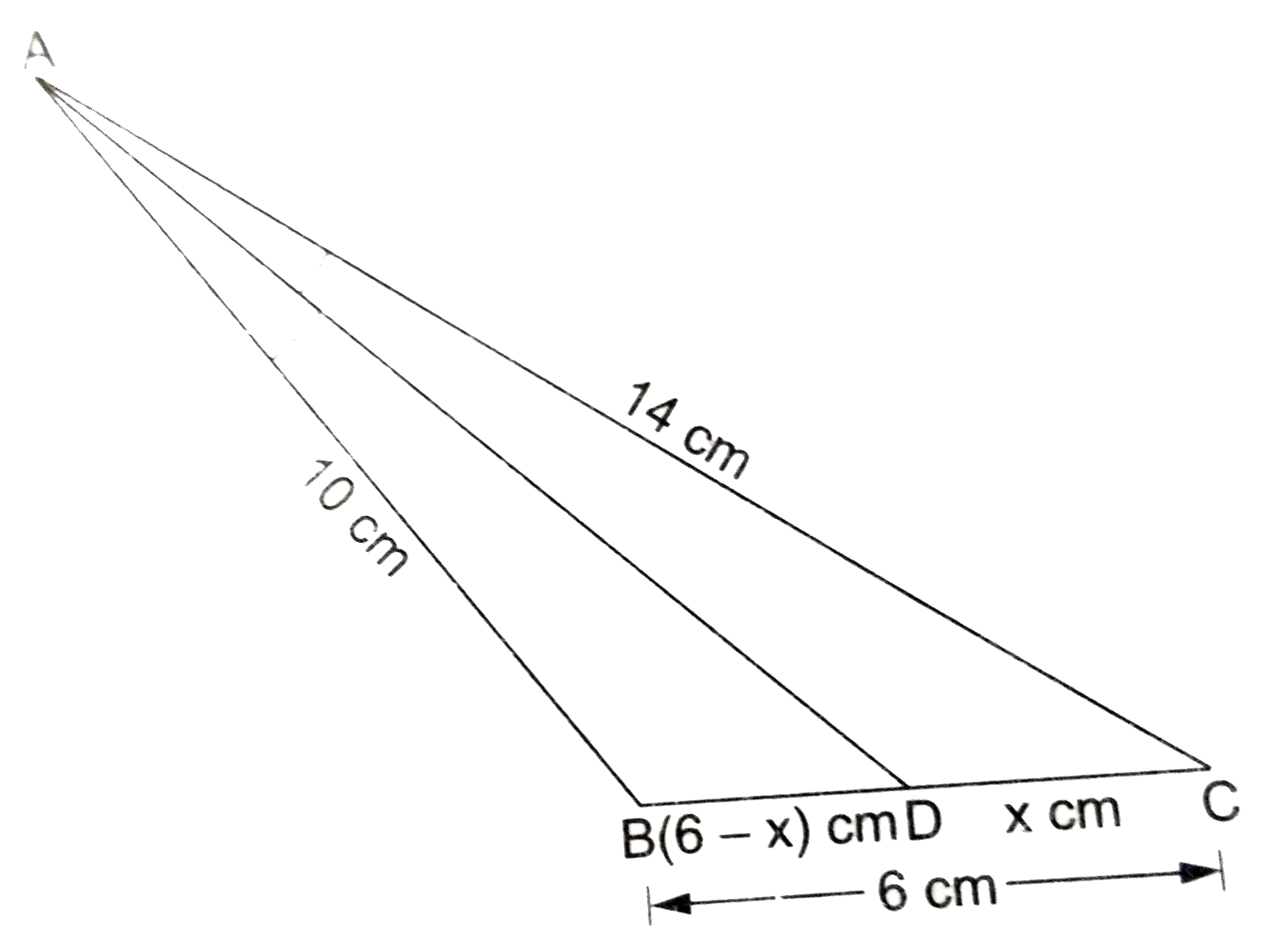ABC is a equilateral triangle and CD is internal bisector of ∠C. If DC is extended to E in such a way that AC = CE then ∠CAE is-
75∘
30∘
15∘
45∘
To solve the problem step by step, let's break it down:
Step 1: Understand the Properties of the Equilateral Triangle
Since triangle ABC is equilateral, all its angles are equal to 60 degrees. Therefore, we have:
- ∠A=60∘
- ∠B=60∘
- ∠C=60∘
Hint: Remember that in an equilateral triangle, all sides and angles are equal.
Step 2: Identify the Internal Bisector
CD is the internal bisector of angle C. This means that it divides angle C into two equal parts:
- ∠ACD=∠BCD=60∘2=30∘
Hint: The internal bisector divides an angle into two equal angles.
Step 3: Extend CD to Point E
We extend line segment DC to point E such that AC=CE. This means triangle ACE is isosceles with AC=CE.
Hint: When two sides of a triangle are equal, the angles opposite those sides are also equal.
Step 4: Analyze Triangle ACE
In triangle ACE, since AC=CE, we can denote:
- ∠CAE=∠CEA
Let ∠CAE=x. Then ∠CEA=x as well.
Step 5: Calculate Angle ACE
Now, we can find ∠ACE:
- The sum of angles in triangle ACE is 180∘:
∠CAE+∠CEA+∠ACE=180∘
Substituting the known values:
x+x+∠ACE=180∘
2x+∠ACE=180∘
Step 6: Find Angle ACE
From the previous steps, we know that ∠ACE can be calculated as follows:
- Since ∠ACD=30∘ and ∠DCE=180∘ (straight line), we have:
∠ACE=180∘−30∘=150∘
Step 7: Substitute Back to Find x
Now we can substitute ∠ACE back into our equation:
2x+150∘=180∘
2x=180∘−150∘
2x=30∘
x=15∘
Conclusion
Thus, the value of ∠CAE is 15∘.
Final Answer: ∠CAE=15∘
---
Since triangle ABC is equilateral, all its angles are equal to 60 degrees. Therefore, we have:
- ∠A=60∘
- ∠B=60∘
- ∠C=60∘
CD is the internal bisector of angle C. This means that it divides angle C into two equal parts:
- ∠ACD=∠BCD=60∘2=30∘
We extend line segment DC to point E such that AC=CE. This means triangle ACE is isosceles with AC=CE.
In triangle ACE, since AC=CE, we can denote:
- ∠CAE=∠CEA
Now, we can find ∠ACE:
- The sum of angles in triangle ACE is 180∘:
∠CAE+∠CEA+∠ACE=180∘
Substituting the known values:
x+x+∠ACE=180∘
2x+∠ACE=180∘
From the previous steps, we know that ∠ACE can be calculated as follows:
- Since ∠ACD=30∘ and ∠DCE=180∘ (straight line), we have:
∠ACE=180∘−30∘=150∘
Now we can substitute ∠ACE back into our equation:
2x+150∘=180∘
2x=180∘−150∘
2x=30∘
x=15∘
Thus, the value of ∠CAE is 15∘.
Topper's Solved these Questions
Similar Questions
Knowledge Check
ABC is a equilateral triangle and CD is internal bisector of ∠C. If DC is extended to E in such a way that AC = CE then ∠CAE is-
A45∘B75∘C30∘D15∘ABC is a equilateral triangle and CD is internal bisector of ∠C. If DC is extended to E in such a way that AC = CE then ∠CAE is-
A45∘B75∘C30∘D15∘CF is the internal bisector of angle C of ΔABC then CF is equal to
A2aba+bcosC2Ba+b2abcosC2CbsinAsin(B+C2)Dnone of these
In a ΔABC, it is give ttha AD is the internal bisector of ∠A. If AB=10cm,AC=14cmandBC=6cm then CD=?

View SolutionProve that the internal bisector of the angle A of a triangle ABC divides BC in the ratio AB:AC
View SolutionIn a triangle ABC, D is a point on BC such that AD is the internal bisector of ∠A. Let ∠B=2∠C and CD = AB. Then ∠A is
View SolutionIn △ABC, AD is the internal bisector of ∠S, meeting the side BC at D. If BD = 5cm, BC = 7.5 cm, then AB:AC is:
View SolutionIn a triangle ABC, internal bisector of ∠ABC and external bisector of ∠ACB meet in D. Which one of the following is true ?
View Solution

